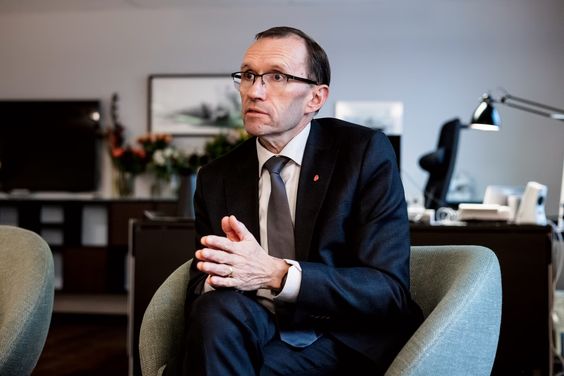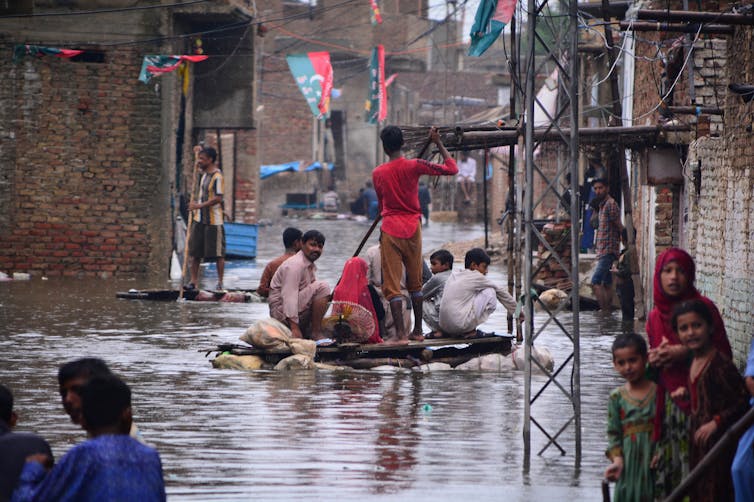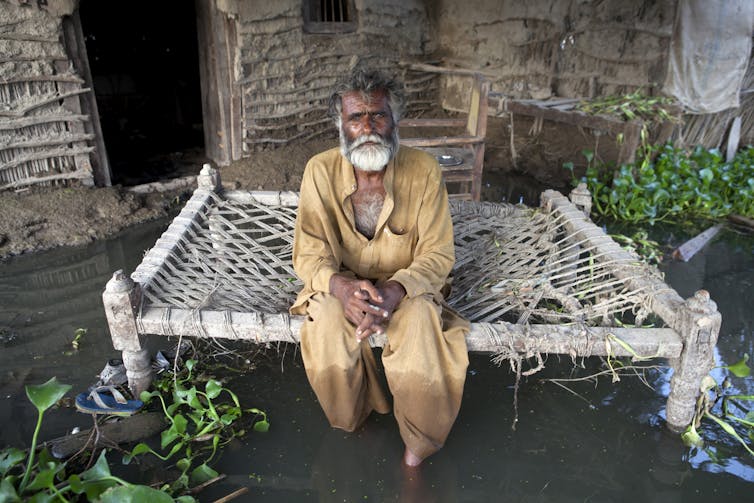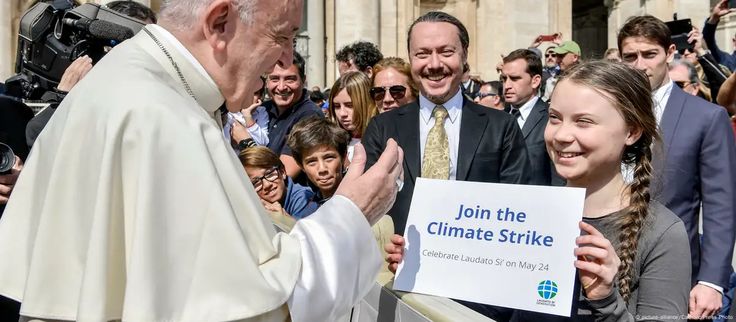
Denmark becomes the first country to pledge ‘loss and damage’ finance
The Nordic nation committed 100 million DKK ($13m) to build resilience and help climate victims recover during a ministerial meeting on the sideline of the UN General Assembly in New York on October 18.
Previously, only Scotland and the Belgian region of Wallonia have pledged to fund for loss and damage. Neither is a member state of the United Nations.
It is grossly unfair that the world’s poorest should suffer the most from the consequences of climate change, to which they have contributed the least. With this new agreement, we are putting action behind words.
Denmark’s development minister Flemming Møller Mortensen
03 October 2022 Secretary-General’s opening remarks at press encounter on Pre-COP27
On the central question of loss and damage, we know people and nations are suffering now. They need meaningful decisions now. Failure to act on loss and damage will lead to more loss of trust and more climate damage. This is a moral imperative that cannot be ignored and COP27 must be the place for action on loss and damage. This is the number one litmus test of how seriously both developed and developing governments take the growing climate toll on the most vulnerable countries.
UN Secretary-General António Guterres, Pre-COP27
António Guterres
Ladies and gentlemen of the media, thank you very much for your presence.
We are weeks from the UN Climate Conference — COP27 – in Egypt.
Starting today, government representatives are meeting in Kinshasa for the critical pre-COP that will set the stage.
The work ahead is immense.
As immense as the climate impacts we are seeing around the world.
A third of Pakistan flooded.
Europe’s hottest summer in 500 years.
The Philippines hammered.
The whole of Cuba in black-out.
And here, in the United States, Hurricane Ian has delivered a brutal reminder that no country and no economy is immune from the climate crisis.
While climate chaos gallops ahead, climate action has stalled.
COP27 is critical – but we have a long way to go.
Let’s be clear.
The collective commitments of G20 governments are coming far too little and far too late.
The actions of the wealthiest developed and emerging economies simply don’t add up.
Taken together, current pledges and policies are shutting the door on our chance to limit global temperature rise to 2 degrees Celsius, let alone meet the 1.5-degree goal.
We are in a life-or-death struggle for our own safety today and our survival tomorrow.
There is no time for pointing fingers — or twiddling thumbs.
It is time for a game-changing, quantum level compromise between developed and emerging economies.
The world cannot wait.
Emissions are at an all-time high and rising.
Meanwhile, the war in Ukraine is putting climate action on the back burner while our planet itself is burning.
We even see backsliding in some areas of the private sector – namely, around fossil fuels – while the most dynamic climate actors in the business world continue to be hampered by obsolete regulatory frameworks, red tape and harmful subsidies that send the wrong signals to markets.
All of this increases the importance of my high-level group on the net zero commitments of business and others.
Every government, every business, every investor, every institution must step up with concrete climate actions for net zero.
We also need to see meaningful progress in two other key areas:
Decisions and actions to address loss and damage that are beyond countries’ abilities to adapt.
And finance for climate action.
.
On the central question of loss and damage, we know people and nations are suffering now.
They need meaningful decisions now.
Failure to act on loss and damage will lead to more loss of trust and more climate damage.
This is a moral imperative that cannot be ignored and COP27 must be the place for action on loss and damage.
This is the number one litmus test of how seriously both developed and developing governments take the growing climate toll on the most vulnerable countries.
This week’s pre-COP can determine how this crucial issue will be handled in Sharm el-Shaikh.
Ministers in Kinshasa must work to ensure action at COP27 – not another dead-end discussion.
On finance, the world needs clarity from developed countries on where they are this year on the delivery on their $100 billion dollars a year promise to support climate action in developing countries.
We need to see evidence of how they will double adaptation finance to at least $40 billion dollars in 2025, as agreed in Glasgow.
Funding for adaptation and resilience must represent at least half of all climate finance.
And the Multilateral Development Banks – including the World Bank — must raise their game.
Emerging economies in particular need their support to back the renewable energy revolution and build resilience.
The Resilience and Sustainability Trust led by the International Monetary Fund is a good start.
But the major shareholders in the Multilateral Development Banks – the member states – must be the driving force for transformative change.
International Financial Institutions need more resources.
Small Island Developing States and other vulnerable middle-income countries need access to concessional finance for adaptation to protect their communities and infrastructure.
At the same time, international financial institutions must overhaul their business model and approach to risk.
Beyond pursuing their own drop-in-the-bucket initiatives, they must intensify their efforts to leverage the necessary massive increases of private finance as first-investors and risk-takers.
On every climate front, the only solution is decisive action in solidarity.
COP27 is the place for all countries – led by the G-20 — to show they are in this fight and in it together.
And the best way to show it is by showing up at COP 27 in Sharm el-Shaikh.
I am urging leaders at the highest level to take full part in COP 27 and tell the world what climate action they will take nationally and globally.
Leaders of the world can demonstrate through their presence and active participation that climate action truly is the top global priority that it must be.
Thank you.

Bethany Tietjen, Tufts University
You may hear the phrase “loss and damage” in the coming weeks as government leaders meet in Egypt for the 2022 U.N. Climate Change Conference.
It refers to the economic and physical costs that developing countries face from climate change impacts. Many of the world’s most climate-vulnerable countries have done little to cause climate change, yet they are experiencing extreme heat waves, floods, and other climate-related disasters. They want wealthier nations – historically the biggest sources of greenhouse gas emissions – to pay for the harm.
A powerful example is Pakistan, where extreme rainfall on the heels of a glacier-melting heat wave flooded nearly one-third of the country in the summer of 2022.
The flooding turned Pakistan’s farm fields into miles-wide lakes that stranded communities for weeks. More than 1,700 people died, millions lost their homes and livelihoods, and more than 4 million acres of crops and orchards, as well as livestock, drowned or were damaged. This was followed by a surge in malaria cases as mosquitoes bred in the stagnant water.
Pakistan contributes only about 1% of the global greenhouse gas emissions driving climate change. But greenhouse gases don’t stay within national borders – emissions anywhere affect the global climate. A warming climate intensifies rainfall, and studies suggest climate change may have increased Pakistan’s rainfall intensity by as much as 50%.

Gideon Mendel For Action Aid/ In Pictures/Corbis via Getty Images
The question of payments for loss and damage has been a long-standing point of negotiation at United Nations climate conferences, held nearly every year since 1995. Still, there has been little progress toward including a financial mechanism for these payments in international climate agreements.
Many developing countries are looking to this year’s conference, COP27, as a crucial moment for making progress on establishing that formal mechanism.
Africa’s climate conference
With Egypt hosting this year’s U.N. climate conference, it’s not surprising that loss and damage will take center stage.
Countries in Africa have some of the lowest national greenhouse gas emissions, and yet the continent is home to many of the world’s most climate-vulnerable countries.
To deal with climate change, these countries – many of them among the world’s poorest – will have to invest in adaptation measures, such as seawalls, climate-smart agriculture, and infrastructure that’s more resilient to high heat and extreme storms. The UN Environment Program’s Adaptation Gap Report, released Nov. 3, 2022, found that developing countries need five to 10 times more international adaptation finance than wealthier countries are providing.
When climate disasters strike, countries also need financial help for relief efforts, infrastructure repairs, and recovery. This is loss and damage.
Egypt is emphasizing the need for wealthy countries to make more progress in providing financial support for both adaptation and loss and damage.
Climate injustice and loss and damage
The conversation on loss and damage is inherently about equity. It evokes the question: Why should countries that have done little to cause global warming to be responsible for the damage resulting from the emissions of wealthy countries?
That also makes it contentious. Negotiators know that payments for loss and damage can lead to further discussions about financial compensation for historical injustices, such as slavery in the United States or colonial exploitation by European powers.
At COP26, held in 2021 in Glasgow, Scotland, negotiators made progress on some key issues, such as stronger emissions targets and pledges to double adaptation finance for developing countries. But COP26 was seen as a disappointment by advocates trying to establish a financial mechanism for wealthier nations to finance loss and damage in developing countries.
What loss and damage payments might look like
The lack of resolution at COP26, combined with Egypt’s commitment to focus on financing for adaptation and loss and damage, means the issue will be on the table this year.
The nonprofit Center for Climate and Energy Solutions expects discussions to focus on institutional arrangements for the Santiago Network for Loss and Damage, which focuses on providing technical assistance to help developing countries minimize loss and damage; and on fine-tuning the Glasgow Dialogue, a formal process developed in 2021 to bring countries together to discuss funding for loss and damage.
The V20 group of finance ministers, representing 58 countries highly vulnerable to climate change, and the G-7 group of wealthy nations also reached an agreement in October 2022 on a financial mechanism called the Global Shield Against Climate Risks. The Global Shield is focused on providing risk insurance and rapid financial assistance to countries after disasters, but it’s unclear how it will fit into the international discussions. Some groups have raised concerns that relying on insurance systems can overlook the poorest people and distract from the larger discussion of establishing a dedicated fund for loss and damage.
Two elements of developed countries’ reluctance to formalize a loss and damage mechanism involve how determining which countries or communities are eligible for compensation and what the limitations of such a mechanism would be.
What would a threshold for loss and damage eligibility look like? Limiting countries or communities from receiving compensation for loss and damage based on their current emissions or gross domestic product could become a problematic and complicated process. Most experts recommend determining eligibility based on climate vulnerability, which can also prove difficult.
How will world leaders respond?
Over a decade ago, developed countries committed to providing US$100 billion annually to fund adaptation and mitigation in developing countries. But they have been slow to meet that commitment, and it does not cover the damages from the climate impacts the world is already seeing today.
Establishing a loss and damage mechanism is considered one avenue to provide recourse for global climate injustice. All eyes will be on Egypt from Nov. 6-18, 2022, to see how world leaders respond.
This article was updated on Nov. 3, 2022, with the UNEP Adaptation Gap Report findings.![]()
Bethany Tietjen, Research fellow in climate policy, The Fletcher School, Tufts University
This article is republished from The Conversation under a Creative Commons license. Read the original article.




4 Comments
Pingback: ทัวร์หลีเป๊ะ
Pingback: หาเพื่อนเที่ยว
Pingback: สาเหตุที่ทำให้ T-ibcbet ได้รับความนิยม
Pingback: Hyperlinks